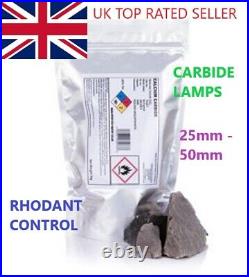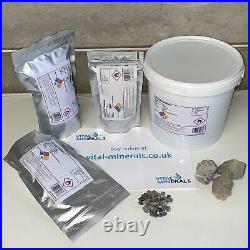



This is Vital Minerals. Carbide, packed in Ribble Valley UK. Supplied in aluminium doypack pouch with resealable zip grip and heat seal or 5kg bucket. Carbide is mixed with water, it produces acetylene. Acetylene is primarily used as a fuel. Carbide is sometimes used in the process of making steel, according to the International Association for Calcium. It aids in desulpherising iron used in foundry casting. Steelmakers also use calcium. Carbide to remove iron and manganese oxides, which can interfere with the steel refining process. Carbide is used in carbide lamps. For carbide lamps acetylene is added along with water for ignition. Carbide lamps are extensively used in copper, slate and tin mines. They are now being replaced by electric lamps but are still popular for adventures and scientific expeditions in caves. They are widely used in vintage cars for their sophisticated look. Carbide is used in the production of calcium cyanamid by means of reacting it with nitrogen in a very high temperature. Calcium cyanamid is further used for production of high quality fertilizers.


